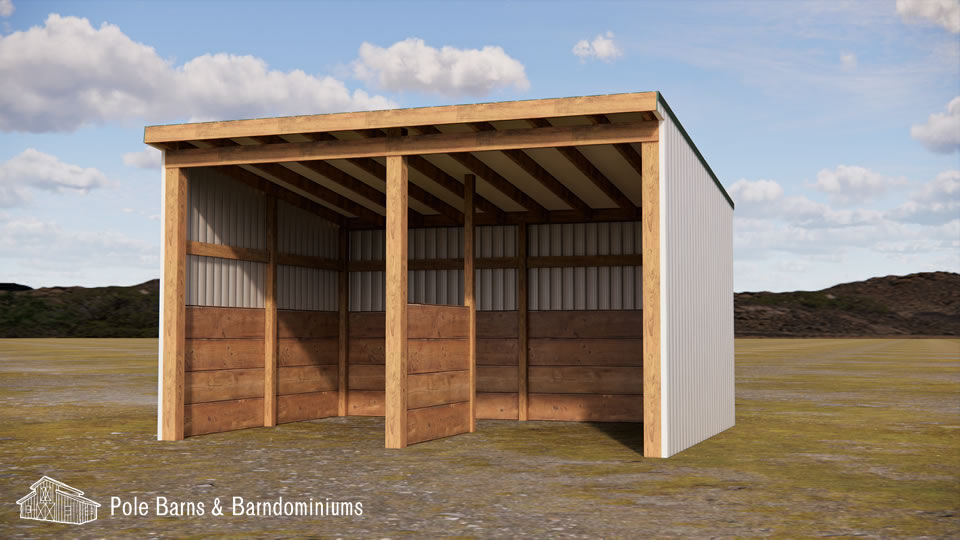Monday, 11 November 2024
How to Design and Build a Pole Barn for Your Property

Alright, so you've decided to build a pole barn. Maybe you need more storage space, want a workshop, or are dreaming of a spacious garage for your prized vehicles. Whatever the reason, you're in for a rewarding project! Building a pole barn is a great way to add value to your property and personalize your space. But where do you even start? Don't worry, I'm here to walk you through it.
1. The Dream Phase: Planning Your Pole Barn
First things first, get your creative juices flowing! What are you going to use your pole barn for? This will shape your design and features. Do you want a simple storage shed or a fully functional workshop with electricity and heating? Are you thinking of adding a loft for extra storage or maybe even a living space?
Once you have a general idea, start sketching out your vision. Consider these key factors:
Size: How much space do you actually need? Don't underestimate your future needs, especially if you think you might expand later. Remember, you can always add on to a pole barn, but it's tougher to shrink it!
Location: Choose a spot that's easily accessible, has good drainage, and doesn't require a lot of grading.
Foundation: Do you need a concrete slab or will gravel suffice?
Roof: How steep do you want the roof pitch? This will affect snow load and rainwater runoff.
Doors and Windows: Think about the size and placement of doors and windows.
Extras: Will you need insulation, electricity, plumbing, or heating?
2. The Reality Check: Getting the Paperwork Done
Now for the boring part (but a crucial one!), you need to get your permits in order. Check with your local building department for specific regulations. You might need:
Building Permits: This is a must-have, folks! It ensures your barn is built to local codes and safety standards.
Zoning Permits: Make sure your pole barn is allowed in your zoning district.
Setback Requirements: This dictates how far your building can be from property lines.
Foundation Inspections: You'll need an inspector to check your foundation before moving on to the next stage.
3. The Preparation Phase: Getting Ready to Build
You've got your plan, permits, and location. Now it's time to gather your tools and materials.
Tools:
Power tools: You'll need a circular saw, drill, impact driver, and possibly a chop saw.
Hand tools: A hammer, level, measuring tape, tape measure, and utility knife are essentials.
Safety Gear: Always wear safety glasses, gloves, and hearing protection.
Materials:
Pole Beams: Choose pressure-treated lumber for longevity.
Foundation Posts: These need to be deep enough to handle the weight of your barn.
Sill Plates and Joists: These will form the base of your barn walls and floor.
Roof Trusses: These will provide the framework for your roof.
Sheathing: This goes over the framework, providing a solid base for your siding and roofing.
Siding: Choose a material that suits your needs and aesthetic.
Roofing: Consider your climate and budget when choosing roofing material.
4. The Construction Phase: Building Your Pole Barn
Okay, this is the fun part (and the most physically demanding)!
Laying the Foundation: Start by digging holes for your foundation posts and pour concrete. This ensures your barn is stable and long-lasting.
Erecting the Poles: Once the concrete has set, carefully erect your poles. You'll need help with this step! Make sure the poles are level and plumb before you move on.
Installing the Sill Plates and Joists: These will attach to your poles, creating the frame for your walls and floor.
Building the Roof: This will involve installing roof trusses, sheathing, and roofing material.
Adding Siding and Finishing Touches: This is where your pole barn really starts to take shape!
5. The Finishing Touches: Personalizing Your Space
Now that your pole barn is built, it's time to make it truly yours.
Electricity: You'll need an electrician to run wiring for lights, outlets, and other electrical needs.
Heating and Cooling: Consider your climate and how you'll be using your pole barn.
Flooring: From concrete to wood to tile, there are many options for flooring.
Insulation: Insulation will make your pole barn more comfortable and energy-efficient.
Building a pole barn is a labor of love, but it's a rewarding project that will give you years of enjoyment. If you're not comfortable with DIY, consider hiring a professional contractor. They can handle the heavy lifting and ensure your barn is built to code.
Remember, safety first! Always follow safety guidelines and don't hesitate to ask for help when needed.
And there you have it - a comprehensive guide to building your own pole barn! It's a journey, but with proper planning, preparation, and a bit of elbow grease, you'll end up with a beautiful and functional space that you can truly call your own.
No comments:
Post a Comment
Note: only a member of this blog may post a comment.